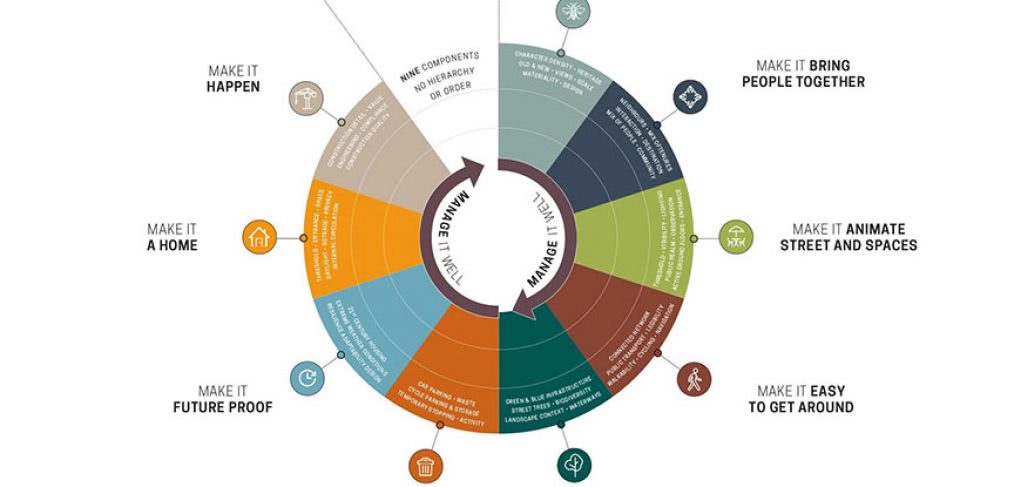
Make It Manchester: New Residential Quality Guidance Promotes Innovation and Sustainability
CallisonRTKL’s Michael Dillon discusses smart new standards for Manchester development.
With a rapidly growing and diversifying population, Manchester is a city on the rise. Next to London, it is currently the fastest growing city in the United Kingdom— one of the many reasons we decided to open an office in the city this year. Over the past ten years, significant residential growth has occurred in Manchester’s City Centre, but when gone totally unchecked, this sort of development can be antithetical to the expansion and modernization of the city. That’s why we are so excited to be co-authors of The Manchester Residential Quality Guidance with Deloitte Planning and Planit-IE. The guide was published for consultation this week by the Manchester City Council.
In essence, the guide is a recipe for creating the most durable, sustainable and high-quality residential developments in Manchester. It was inspired in part by The Manchester Strategy (“Our Manchester”), which envisions Manchester becoming a top-tier, world class cities by 2025. The basis of this plan is the addition of at least 25,000 new homes over the next ten years— a goal which will help sustain Manchester’s economic and population growth.
If this plan is to take action, it is critical to ensure the sustainability and quality of these residential developments. That’s where the Manchester Residential Quality Guidance enters the picture. With a rough outline of development best practices at their fingertips, developers, architects and designers will be able to easily create residences that achieve this goal.
We recently opened our Manchester office, so this project hits very close to home. We at CallisonRTKL hope to be a part of sustainable and durable change in the residential market in Manchester. Our participation in the creation of this guide is directly related to our dedication to improving the lives and residences of our Manchester clients.
The key purpose of the guidance is to provide context, give rationale and answer important questions that developers should ask themselves during the development process. It details guidelines for space standards, floor-to-ceiling heights, corridor widths and lengths, lifts, the distance between buildings, the size of private external amenity space and more— all with sustainability and quality in mind.
The guidance focuses on nine components that inform high-quality residential development:
- Make It Manchester: Understanding the character and qualities of the various parts of the city
- Make It Bring People Together: Encourage a sense of community and neighbourliness
- Make It Animate Streets and Spaces: The interrelationship between buildings, streets and spaces in making a place feel safer and inviting
- Make It Easy to Get Around: Ensuring that development is accessible, well-connected and easy to get around
- Make It Work with the Landscape: Enhancing and improving the connection with landscape and nature
- Make It Practical: Dealing with the clutter of life
- Make It Future Proof: Anticipate the impacts and effects of climate change that can make residential design more efficient
- Make It A Home: Providing sufficient space, natural light and storage to allow people to settle down and flourish
- Make it Happen: Ensuring that proposals are delivered as designed, well-constructed and sustainably built
Manchester has been using the London Housing Design Guide since 2015, but this new guide will provide direction for residential development based on Manchester’s unique attributes and needs. Of course, this plan is in no way meant to stifle creativity; in fact, it encourages innovation. But the guidance will ensure that these innovations promote the welfare of Manchester over the next decade.
With the recent opening of our Manchester office, this project was of incredible importance to us. Senior members of the Manchester property community, in conjunction with former RIBA President, architect Steven Hodder and Andy Von Bradsky of PRP, acted as a sounding board for the guide’s creation. CallisonRTKL, Deloitte Real Estate and Planit-IE provided expertise in architecture, urban design, placemaking and planning. The experience was both positive and engaging, and it allowed for the creation of a document that will now be extensively consulted on. Following amendments, it will be submitted for approval by the Council in September 2016 and will have a huge impact on the development of such a quickly-growing city.
